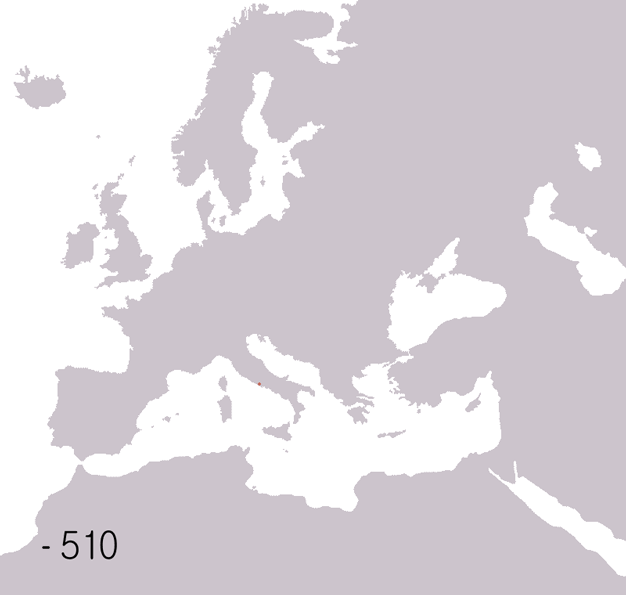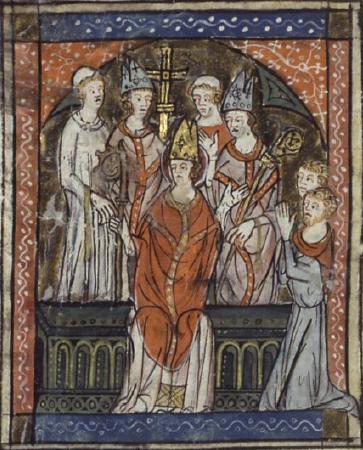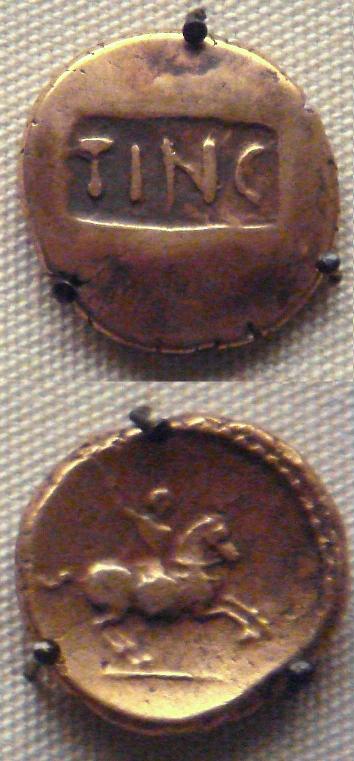|
Vicus Helena
The Battle of Vicus Helena was a clash between the Franks, led by Chlodio, and Roman soldiers, commanded by general Flavius Aetius. The battle is attested in a limited number of late Roman and early Medieval sources, having occurred around the year 448, in an unidentified location named ''Vicus Helena,'' somewhere in the ''Civitas Atrebatium'', modern Artois. Reconstruction Context The Franks were ''foederati'' of the Romans, but regularly plundered towns and villages within the Roman Empire, and somewhere between 445 and 450, Salian Franks under Chlodio conquered the cities of ''Turnacum'' (modern Tournai) and ''Cameracum'' (Cambrai), which became centres of Frankish power. The capture of ''Cameracum'' must have happened after 443, because Gregory mentions the Burgundians had already settled east of the river Rhône. Next, the Franks expanded towards the river Somme. Around 448, the city of Nemetocenna (modern Arras) was probably sacked by the Franks as well. Battle Roman ... [...More Info...] [...Related Items...] OR: [Wikipedia] [Google] [Baidu] |
Fall Of The Roman Empire
The fall of the Western Roman Empire, also called the fall of the Roman Empire or the fall of Rome, was the loss of central political control in the Western Roman Empire, a process in which the Empire failed to enforce its rule, and its vast territory was divided among several successor polities. The Roman Empire lost the strengths that had allowed it to exercise effective control over its Western provinces; modern historians posit factors including the effectiveness and numbers of the army, the health and numbers of the Roman population, the strength of the economy, the competence of the emperors, the internal struggles for power, the religious changes of the period, and the efficiency of the civil administration. Increasing pressure from invading peoples outside Roman culture also contributed greatly to the collapse. Climatic changes and both endemic and epidemic disease drove many of these immediate factors. The reasons for the collapse are major subjects of the historiog ... [...More Info...] [...Related Items...] OR: [Wikipedia] [Google] [Baidu] |
Arras
Arras ( , ; ; historical ) is the prefecture of the Pas-de-Calais department, which forms part of the region of Hauts-de-France; before the reorganization of 2014 it was in Nord-Pas-de-Calais. The historic centre of the Artois region, with a Baroque town square, Arras is in northern France at the confluence of the rivers Scarpe and Crinchon. The Arras plain is on a large chalk plateau bordered on the north by the Marqueffles fault, on the southwest by the Artois and Ternois hills, and on the south by the slopes of Beaufort-Blavincourt. On the east it is connected to the Scarpe valley. Saint Vedast (or St. Vaast) was the first Catholic bishop in the year 499 and tried to eliminate paganism among the Franks. By 843, Arras was seat of the County of Artois which became part of the Royal domain in 1191. The first mention of the name ''Arras'' appeared in the 12th century. Some hypothesize it is a contraction of '' Atrebates'', a Belgic tribe of Gaul and Britain that u ... [...More Info...] [...Related Items...] OR: [Wikipedia] [Google] [Baidu] |
Gregory Of Tours
Gregory of Tours (born ; 30 November – 17 November 594 AD) was a Gallo-Roman historian and Bishop of Tours during the Merovingian period and is known as the "father of French history". He was a prelate in the Merovingian kingdom, encompassing Gaul's historic region. Gregory's most notable work is the ('Ten Books of Histories'), also known as the ('History of the Franks'). is considered a primary source for the study of Merovingian history and chronicles the accounts of the Franks during the period. Gregory is also known for documenting accounts of religious figures, notably that of Martin of Tours. Biography Gregory was born in Clermont, in the Auvergne region of central Gaul. He was born into the upper stratum of Gallo-Roman society as the son of Florentius, Senator of Clermont, by his wife Armentaria II, niece of Bishop Nicetius of Lyon and granddaughter of both Florentinus, Senator of Geneva, and Saint Gregory of Langres. Relatives of Gregory held the Bishopr ... [...More Info...] [...Related Items...] OR: [Wikipedia] [Google] [Baidu] |
Cuirass
A cuirass ( ; ; ) is a piece of armour that covers the torso, formed of one or more pieces of metal or other rigid material. The term probably originates from the original material, leather, from the Old French word and the Latin word . The use of the term ''cuirass'' generally refers to both the breastplate and the backplate pieces; whereas a breastplate protects only the front, a cuirass protects both the front and the back of the wearer. Description In Hellenistic Greece, Hellenistic and ancient Rome, Roman times, the musculature of the male torso was idealized in the form of the muscle cuirass or "heroic cuirass" (in French the ''cuirasse esthétique'') sometimes further embellished with symbolic representation in relief, familiar in the Augustus of Prima Porta and other heroic representations in official Roman sculpture. As parts of the actual military equipment of classical antiquity, cuirasses and corsets of bronze, iron, or some other rigid substance were used. Seconda ... [...More Info...] [...Related Items...] OR: [Wikipedia] [Google] [Baidu] |
Chain Mail
Mail (sometimes spelled maille and, since the 18th century, colloquially referred to as chain mail, chainmail or chain-mail) is a type of armour consisting of small metal rings linked together in a pattern to form a mesh. It was in common military use between the 3rd century BC and the 16th century AD in Europe, while it continued to be used militarily in Asia, Africa, and the Middle East as late as the 18th century. Even today it is still in use in industries such as Butcher, butchery and as protection against the powerful bites of creatures such as sharks. A coat of this armour is often called a hauberk or sometimes a byrnie. History The earliest examples of surviving mail were found in the Carpathian Basin at a burial in Horný Jatov, Slovakia dated in the 3rd century BC, and in a chieftain's burial located in Ciumești, Romania. Its invention is commonly credited to the Celts, [...More Info...] [...Related Items...] OR: [Wikipedia] [Google] [Baidu] |
Plank (wood)
A plank is timber that is flat, elongated, and rectangular with parallel faces that are higher and longer than wide. Used primarily in carpentry, planks are critical in the construction of ships, houses, bridges, and many other structures. Planks also serve as supports to form shelves and tables. Usually made from timber, sawed so that the grain runs along the length, planks are usually more than thick, and are generally wider than . Planks are often used as a work surface on elevated scaffolding, and need to be thick enough to provide strength without breaking when walked on. In the United States, planks can be any length and are generally a minimum of 2×8 (), but planks that are 2×10 () and 2×12 () are more commonly stocked by lumber retailers. Timber is categorized as a board if its width is less than , and its thickness is less than . In Germany, the national norm (DIN 68252) stipulates that the thickness of a plank (termed ''Bohle)'' must be 40 mm minimum. A p ... [...More Info...] [...Related Items...] OR: [Wikipedia] [Google] [Baidu] |
Defile (geography)
In geography, a defile is a narrow pass or gorge between mountains or hills. The term originates from a military description of a route through which troops can march only in a narrow column or with a narrow front. On emerging from a defile (or something similar) into open country, soldiers are said to " debouch". Background In a traditional military formation, soldiers march in ranks (the depth of the formation is the number of ranks) and files (the width of the formation is the number of files), so, if a column of soldiers approaches a narrow pass, the formation must narrow, and so the files on the outside must be ordered to the rear (or to some other position) so that the column has fewer files and more ranks. The French verb for this order is ''défiler'', from which the English verb comes, as does the physical description for a valley that forces this manoeuvre. Defiles of military significance can also be formed by other physical features that flank a pass or path and c ... [...More Info...] [...Related Items...] OR: [Wikipedia] [Google] [Baidu] |
Atrebates
The Atrebates (Gaulish: *''Atrebatis'', 'dwellers, land-owners, possessors of the soil') were a Belgic tribe of the Iron Age and the Roman period, originally dwelling in the Artois region. After the tribes of Gallia Belgica were defeated by Caesar in 57 BC, 4,000 Atrebates participated in the Battle of Alesia in 53, led by their chief Commius. They revolted again in 51 BC, after which they maintained a friendly relationship with Rome, as Commius received sovereignty over the neighbouring Morini. The quality of their woollens is still mentioned in 301 AD by Diocletian's Price Edict. An offshoot of the Belgic tribe probably entered Britain before 54 BC, where it was successively ruled by kings Commius, Tincommius, Eppillus and Verica. After 43 AD, only parts of the area were still controlled by king Claudius Cogidubnus, after which they fell under Roman power. Name They are mentioned as ''Atrebates'' by Caesar (mid-1st c. BC) and Pliny (1st c. AD), ''Atrebátioi'' (Ἀ� ... [...More Info...] [...Related Items...] OR: [Wikipedia] [Google] [Baidu] |
Sidonius Apollinaris
Gaius Sollius Modestus Apollinaris Sidonius, better known as Sidonius Apollinaris (5 November, 430 – 481/490 AD), was a poet, diplomat, and bishop. Born into the Gallo-Roman aristocracy, he was son-in-law to Emperor Avitus and was appointed Urban prefect of Rome by Emperor Anthemius in 468. In 469 he was appointed Bishop of Clermont and he led the defence of the city from Euric, King of the Visigoths, from 473 to 475. He retained his position as bishop after the city's conquest, until his death in the 480s. He is venerated as a saint in the Catholic church, the Orthodox Church, and the True Orthodox Church, with his feast day on 21 August. Sidonius is "the single most important surviving author from 5th-century Gaul" according to Eric Goldberg. He is one of four Gallo-Roman aristocrats of the 5th- to 6th-century whose letters survive in quantity; the others are Ruricius, bishop of Limoges (died 507), Alcimus Ecdicius Avitus, bishop of Vienne (died 518) and Magnus Felix En ... [...More Info...] [...Related Items...] OR: [Wikipedia] [Google] [Baidu] |
Panegyric
A panegyric ( or ) is a formal public speech or written verse, delivered in high praise of a person or thing. The original panegyrics were speeches delivered at public events in ancient Athens. Etymology The word originated as a compound of - 'all' (the form taken by the word πᾶν, neuter of πᾶς 'all', when that is used as a prefix) and the word 'assembly' (an Aeolic dialect form, corresponding to the Attic or Ionic form ). Compounded, these gave 'general or national assembly, especially a festival in honour of a god' and the derived adjective 'of or for a public assembly or festival'. In Hellenistic Greek the noun came also to mean 'a festal oration, laudatory speech', and the adjective 'of or relating to a eulogy, flattering'. The noun had been borrowed into Classical Latin by around the second century CE, as ''panēgyris'' 'festival' (in post-Classical usage also 'general assembly'). Correspondingly, Classical Latin also included the adjective ''panēgyricus'', whi ... [...More Info...] [...Related Items...] OR: [Wikipedia] [Google] [Baidu] |
Wedding Reception
A wedding reception is a party usually held after the completion of a marriage ceremony as hospitality for those who have attended the wedding, hence the name reception: the couple ''receive'' society, in the form of family and friends, for the first time as a married couple. Hosts provide their choice of food and drink, although a wedding cake is popular. Entertaining guests after a wedding ceremony is traditional in most societies, and can last anywhere from half an hour to many hours or even days. Most wedding receptions are made in the evening for dinner; however, the couple may opt for a luncheon, brunch, or even afternoon tea. Ultimately the married couple chooses the details and location of the reception. In some cultures, separate wedding celebrations are held for the bride's and groom's families. Before receptions – a social event that is structured around a receiving line, and usually held in the afternoon, with only light refreshments – became popular, wedding ... [...More Info...] [...Related Items...] OR: [Wikipedia] [Google] [Baidu] |
Tours
Tours ( ; ) is the largest city in the region of Centre-Val de Loire, France. It is the Prefectures in France, prefecture of the Departments of France, department of Indre-et-Loire. The Communes of France, commune of Tours had 136,463 inhabitants as of 2018 while the population of the whole functional area (France), metropolitan area was 516,973. Tours sits on the lower reaches of the Loire, between Orléans and the Atlantic Ocean, Atlantic coast. Formerly named Caesarodunum by its founder, Roman Augustus, Emperor Augustus, it possesses one of the largest amphitheaters of the Roman Empire, the Tours Amphitheatre. Known for the Battle of Tours in 732 AD, it is a National Sanctuary with connections to the Merovingian dynasty, Merovingians and the Carolingian dynasty, Carolingians, with the Capetian dynasty, Capetians making the kingdom's currency the Livre tournois. Martin of Tours, Saint Martin and Gregory of Tours were from Tours. Tours was once part of Touraine, a former provi ... [...More Info...] [...Related Items...] OR: [Wikipedia] [Google] [Baidu] |








